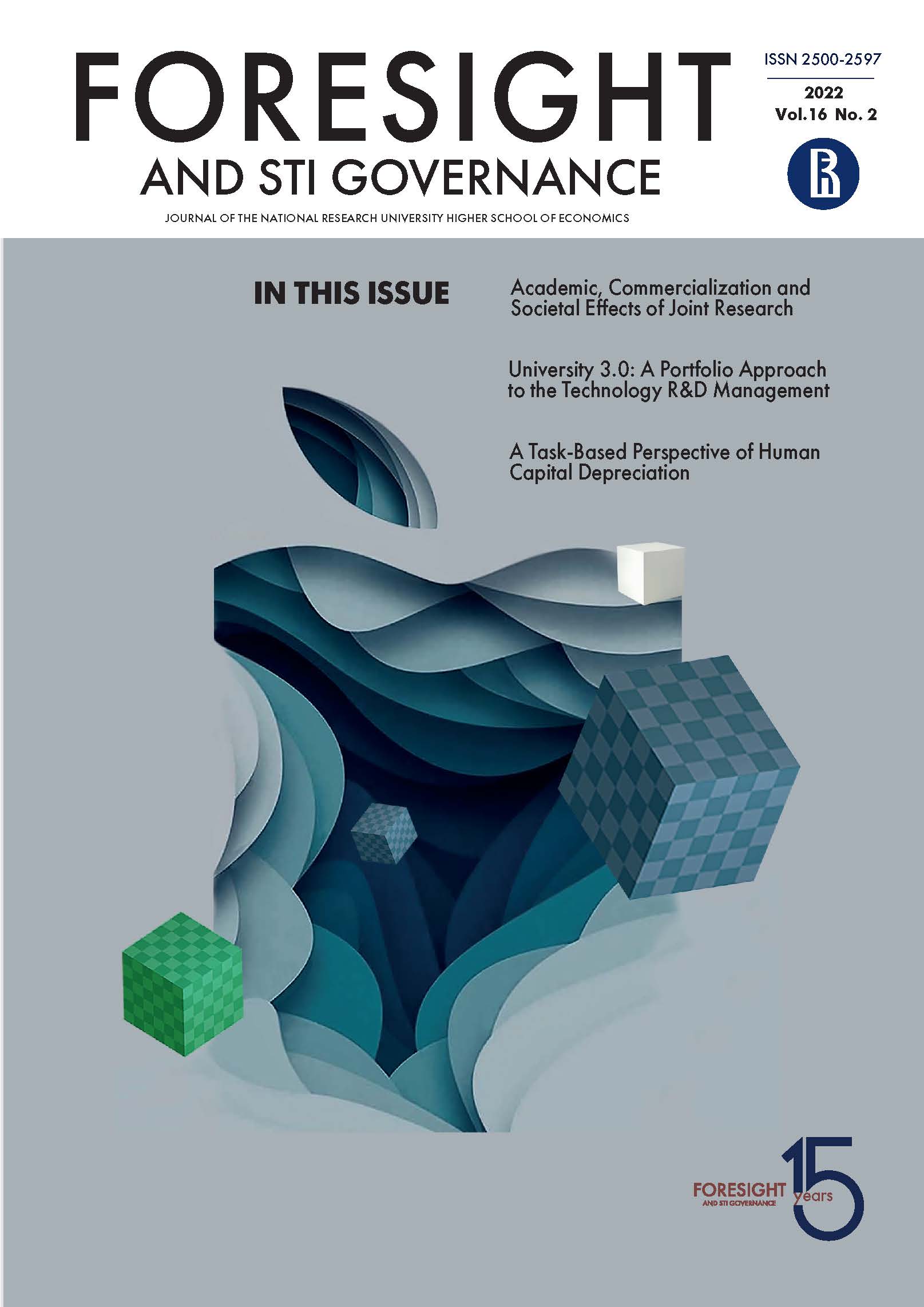Abstract
With an increase of population density and contacts between people, the emergence of new biological viruses, the threat of various epidemics is growing. Countering these threats involves the implementation of large-scale preventive, therapeutic and other measures, both before the start and during the epidemic. Epidemiological informing of the population plays an important role in such counteraction. The currently used models of epidemiological informing the population of cities largely do not meet the needs of practice. This negatively affects the effectiveness of the response to epidemics. The purpose of the study is to develop new models and justify their applicability for understanding the processes in public health, the impact of epidemics on the economy and business. For the quantitative substantiation of programs (scenarios), such epidemiological informing, a method based on new models of epidemic development in related cities is proposed. The method is characterized by a new objective function that links economic efficiency with the state of health of the population in an epidemic. The models differ from the known solutions both in the space of the selected states of the processes under study and in the connections between them.Using the developed method, seven possible programs of epidemiological informing the population of related cities were analyzed and the best of them was found for specific conditions. New regularities have been established between the parameters of the programs being implemented and the results of the impact on the health and performance capability of the population. It is shown how an epidemic can develop in cities that are differently connected to each other by vehicles. The proposed method allows quickly find the best epidemiological informing programs for the population. The models underlying this method make it possible to predict public health and the impact of epidemics on the economy and business, depending on the planned measures to counteract epidemics. They are also applicable to determine the sources and time of infections’ onset. The obtained simulation results are in good agreement with the known facts. The method can be applied in advanced information systems to support the adoption of far-sighted decisions to counteract epidemics.
References
Abdulai A.-F., Tiffere A.-H., Adam F., Kabanunye M.M. (2021) COVID-19 information-related digital literacy among online health consumers in a low-income country. International Journal of Medical Informatics, 145, 104322. DOI: https://doi.org/10.1016/j.ijmedinf.2020.104322
Bellman R. (1983) Mathematical methods in medicine, Singapore: World Scientific.
Browne C., Gulbudak H., Webb G. (2015) Modeling contact tracing in outbreaks with application to Ebola. Journal of Theoretical Biology, 384, 33-49. DOI: https://doi.org/10.1016/j.jtbi.2015.08.004
Chubb M.C., Jacobsen K.H. (2009) Mathematical modeling and the epidemiological research process. European Journal of Epidemiology, 25(1), 13-19. DOI: https://doi.org/10.1007/s10654-009-9397-9
Da Silva R.G., Ribeiro M.H.D.M., Mariani V.C., Coelho L. (2020) Forecasting Brazilian and American COVID-19 cases based on artificial intelligence coupled with climatic exogenous variables. Chaos, Solitons and Fractals, 139, 110027. DOI: https://doi.org/10.1016/j.chaos.2020.110027
Holko A., Mȩdrek M., Pastuszak Z., Phusavat K. (2016) Epidemiological modeling with a population density map-based cellular automata simulation system. Expert Systems with Applications, 48, 1-8. DOI: https://doi.org/10.1016/j.eswa.2015.08.018
Hu Z., Ge Q., Li S., Boerwinkle E., Jin L., Xiong M. (2020) Forecasting and Evaluating Multiple Interventions for COVID-19 Worldwide. Frontiers in Artificial Intelligence, 3. DOI: https://doi.org/10.3389/frai.2020.00041
Katris C. (2021) A time series-based statistical approach for outbreak spread forecasting: Application of COVID-19 in Greece. Expert Systems with Applications, 166, 114077. DOI: https://doi.org/10.1016/j.eswa.2020.114077
Levashkin S.P., Zakharova O.I., Kuleshov S.V., Zaytseva A.A. (2021) Adaptive-compartmental model of coronavirus epidemic and its optimization by the methods of artificial intelligence. Journal of Physics: Conference Series, 1864(1), 012108. DOI: https://doi.org/10.1088/1742-6596/1864/1/012108
Liu N., Chen Z., Bao G. (2020) Role of Media Coverage in Mitigating COVID-19 Transmission: Evidence from China. Technological Forecasting and Social Change, 163, 120435. DOI: https://doi.org/10.1016/j.techfore.2020.120435
Medrek M., Pastuszak Z. (2021) Numerical simulation of the novel coronavirus spreading. Expert Systems with Applications, 166, 114109. DOI: https://doi.org/10.1016/j.eswa.2020.114109
Nadella P., Swaminathan A., Subramanian S.V. (2020) Forecasting efforts from prior epidemics and COVID-19 predictions. European Journal of Epidemiology, 35(8), 727-729. DOI: https://doi.org/10.1007/s10654-020-00661-0
Newbold P., Granger C.W.J. (1974) Experience with Forecasting Univariate Time Series and the Combination of Forecasts. Journal of the Royal Statistical Society. Series A (General), 137(2), 131-165. DOI: https://doi.org/10.2307/2344546
Osipov V., Kuleshov S., Zaytseva A., Levonevskiy D., Miloserdov D. (2021) Neural network forecasting of news feeds. Expert Systems with Applications, 169, 114521. DOI: https://doi.org/10.1016/j.eswa.2020.114521
Papa A., Mital M., Pisano P., Del Giudice M. (2020) E-health and wellbeing monitoring using smart healthcare devices: An empirical investigation. Technological Forecasting and Social Change, 153, 119226. DOI: https://doi.org/10.1016/j.techfore.2018.02.018
Qazi A., Qazi J., Naseer K., Zeeshan M., Hardaker G., Maitama J.Z., Haruna K. (2020) Analyzing situational awareness through public opinion to predict adoption of social distancing amid pandemic COVID-19. Journal of Medical Virology, 92(7), 849-855. DOI: https://doi.org/10.1002/jmv.25840
Tiwari P.K., Rai R.K., Khajanchi S., Gupta R.K., Misra A.K. (2021) Dynamics of coronavirus pandemic: Effects of community awareness and global information campaigns. The European Physical Journal Plus, 136(10), 994. DOI: https://doi.org/10.1140/epjp/s13360-021-01997-6
Wu Q., Fu X., Small M., Xu X.-J. (2012) The impact of awareness on epidemic spreading in networks. Chaos: An Interdisciplinary Journal of Nonlinear Science, 22(1), 013101. DOI: https://doi.org/10.1063/1.3673573
Zhou W., Wang A., Xia F., Xiao Y., Tang S. (2020) Effects of media reporting on mitigating spread of COVID-19 in the early phase of the outbreak. Mathematical Biosciences and Engineering, 17(3), 2693-2707. DOI: https://doi.org/10.3934/mbe.2020147
Лукьянович А.В., Афлятунов Т.И. (2015) Анализ возможностей активного информационного воздействия средств массовой информации на население в условиях чрезвычайных ситуаций. Технологии гражданской безопасности, 12(4), 62-68.

This work is licensed under a Creative Commons Attribution 4.0 International License.


